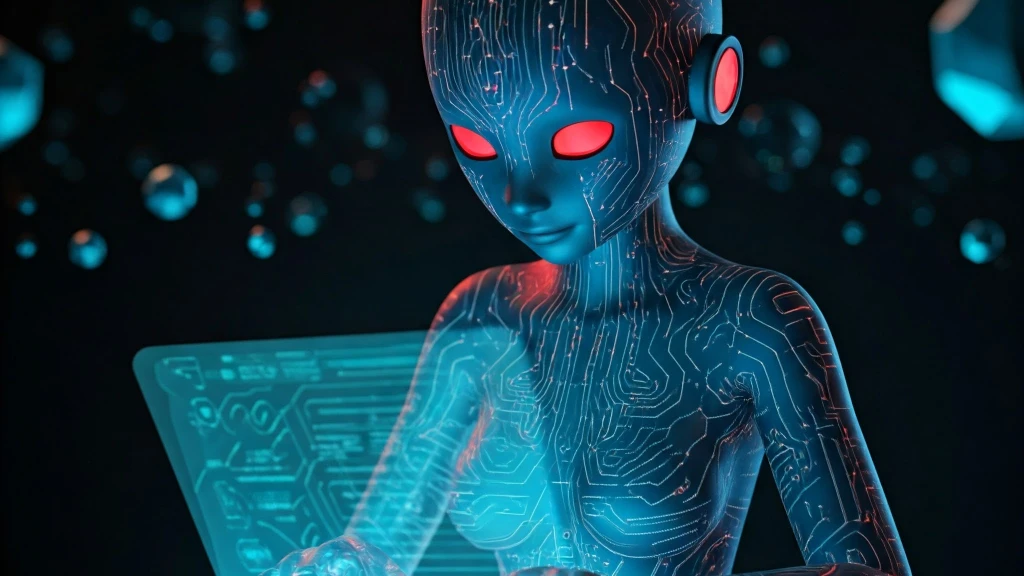How AI is Leading Cybersecurity Attacks in 2024: A New Era of Threats
In 2024, artificial intelligence (AI) is no longer just a tool for enhancing cybersecurity but is increasingly becoming the weapon of choice for cybercriminals. As AI technology has evolved, so too has its potential for malicious use, and we're now witnessing a dramatic shift in how cyberattacks are being executed. In this blog, we’ll explore how AI is driving the next generation of cybersecurity threats and what this means for individuals, businesses, and the global digital landscape.
The Rise of AI in Cybersecurity Attacks
AI has proven to be a double-edged sword. On one hand, AI-powered security tools like automated threat detection, anomaly identification, and predictive analytics are helping organizations fight back against increasingly sophisticated cyber threats. On the other hand, hackers are adopting AI to create more potent, adaptive, and evasive attacks. In 2024, AI's involvement in cyberattacks has escalated in several key areas, leading to significant concerns for cybersecurity professionals.
1. AI-Powered Phishing Attacks
Phishing has been a persistent threat for years, but AI is now transforming it into a far more dangerous and effective weapon. Cybercriminals are leveraging AI to craft highly sophisticated phishing emails and messages that are personalized to a degree previously unimaginable. Machine learning models analyze large amounts of data to understand an individual's communication style, preferences, and behaviors. The result? AI-generated phishing attempts that are indistinguishable from legitimate communications.
In 2024, AI-driven phishing can simulate a specific employee's writing style or mimic well-known brands with near-perfect precision. These AI models can even use natural language processing (NLP) techniques to adapt and evolve in response to the target's behavior, making it harder for traditional security measures to spot the attack.
2. Automated Malware Creation and Delivery
The use of AI in creating and deploying malware has opened a new chapter in cybercrime. In 2024, malware is no longer simply created by human attackers—it’s being automatically generated by AI systems that can analyze vulnerabilities and exploit them with frightening speed and efficiency.
AI systems can now scan millions of lines of code to find weaknesses in software, identify exploitable systems, and generate new malware variants on the fly. These AI-generated malware programs can adapt to different environments, avoid detection by traditional antivirus software, and even change their behavior based on the system they are attacking.
For example, AI-powered polymorphic malware can constantly change its code to avoid detection by signature-based security tools, making it nearly impossible to neutralize using conventional methods.
3. AI-Driven DDoS Attacks
Distributed Denial of Service (DDoS) attacks have been a mainstay of cyberattacks for years, but AI is now making these attacks faster, more efficient, and harder to stop. In 2024, AI-powered DDoS attacks are capable of learning and adapting to the defenses in place, optimizing the attack in real-time.
AI systems can autonomously generate massive volumes of traffic that overwhelm a target server or network, dynamically adjusting the attack based on its effectiveness. This ability to self-adjust allows AI-driven DDoS attacks to bypass traditional defenses and sustain prolonged attacks that are difficult to mitigate. Furthermore, AI systems can coordinate large botnets with minimal human intervention, launching multi-vector DDoS attacks that can target various layers of a network simultaneously.
4. Deepfake Technology and Social Engineering
One of the most unsettling developments in cybersecurity in 2024 is the rise of deepfake technology in cyberattacks. AI-driven deepfake tools can now create hyper-realistic fake audio, video, and images. Cybercriminals can use these tools to impersonate executives, create fraudulent messages, and launch social engineering attacks that are shockingly convincing.
For example, hackers could use AI-generated deepfake videos to impersonate a CEO, instructing an employee to wire funds or provide sensitive information. In other cases, deepfake technology can be used to create fake identities on social media platforms, enabling attackers to manipulate public opinion or gain access to private networks.
The real-time creation and dissemination of deepfakes are escalating the threat of social engineering, enabling cybercriminals to target individuals with much more precision and emotional manipulation than ever before.
5. AI-Powered Identity Theft and Account Takeovers
AI is increasingly being used to automate identity theft and account takeover (ATO) attacks. By leveraging machine learning algorithms, attackers can analyze a user’s online behaviors, social media activity, and past transactions to construct a detailed profile. With this profile, AI systems can guess or predict passwords, security questions, and other forms of authentication with startling accuracy.
In 2024, AI-powered bots are able to launch rapid, automated attacks against login portals, continuously attempting different combinations of credentials to break into accounts. This type of attack is more efficient than ever before, and it’s made even harder to defend against by the sheer speed and volume of attempts.
Moreover, AI tools can automate the process of bypassing multi-factor authentication (MFA), using a combination of stolen credentials and behavioral analysis to evade security checks and take over accounts.
6. AI-Enhanced Insider Threats
Insider threats are another area where AI is amplifying cybersecurity risks. While most organizations focus on protecting their systems from external attacks, AI is being used to help insiders—both malicious and negligent—carry out their attacks with greater stealth and sophistication.
AI can monitor employee behavior and help attackers exploit weaknesses in user access protocols. For example, an insider with access to sensitive data could use AI to analyze patterns and steal information in a way that avoids triggering security alarms. AI systems can also be used to cover up the tracks of data exfiltration by erasing logs, masking activity, and simulating normal user behavior.
This makes detecting insider threats more challenging for organizations, as AI is able to create more convincing cover stories for unusual activities.
How Organizations Can Defend Against AI-Driven Cyberattacks
With AI evolving as both an offensive and defensive tool, traditional cybersecurity approaches are no longer sufficient. Here are some ways organizations can bolster their defenses in the age of AI-driven cybercrime:
- AI-Powered Security Solutions: Invest in AI-driven security tools that can detect abnormal behavior, adapt to new threats, and proactively respond to potential breaches.
- Continuous Monitoring: Implement 24/7 monitoring systems that can leverage machine learning to detect threats in real time and adapt as attackers evolve their tactics.
- Employee Training: Since many AI-driven attacks rely on human error (e.g., falling for phishing emails), ongoing cybersecurity training is essential to help employees recognize threats.
- Zero Trust Architecture: Adopt a zero-trust security model, where no user, device, or system is trusted by default, and access is continuously validated.
- Collaboration with AI Researchers: Stay up-to-date with the latest advancements in AI cybersecurity research to understand emerging threats and ways to mitigate them.
Conclusion
AI is undoubtedly revolutionizing cybersecurity, but it is also revolutionizing cyberattacks. As we move into 2024, cybercriminals are leveraging AI in ways that were once thought to be science fiction. From automated malware creation to highly personalized phishing and AI-generated deepfakes, the landscape of cyber threats is evolving rapidly.
As AI continues to advance, so too must our strategies for defending against cyberattacks. Organizations need to stay ahead of the curve by adopting AI-powered security solutions, maintaining vigilance, and preparing for the growing role of AI in modern cyber warfare. The future of cybersecurity will undoubtedly involve AI, but whether it serves as a shield or a sword will depend on how we respond to the growing threats in this new era.



No comment yet!
Leave a Reply